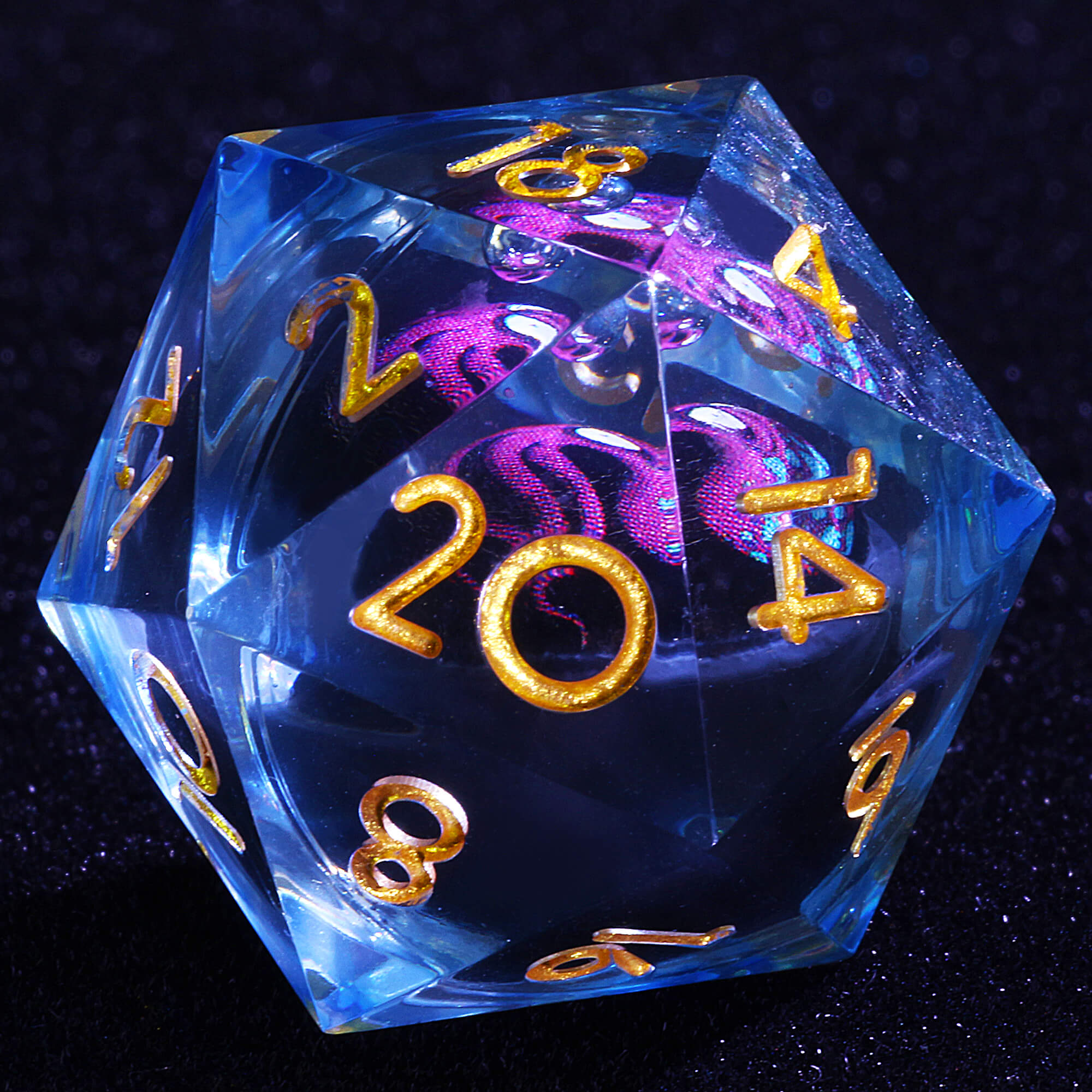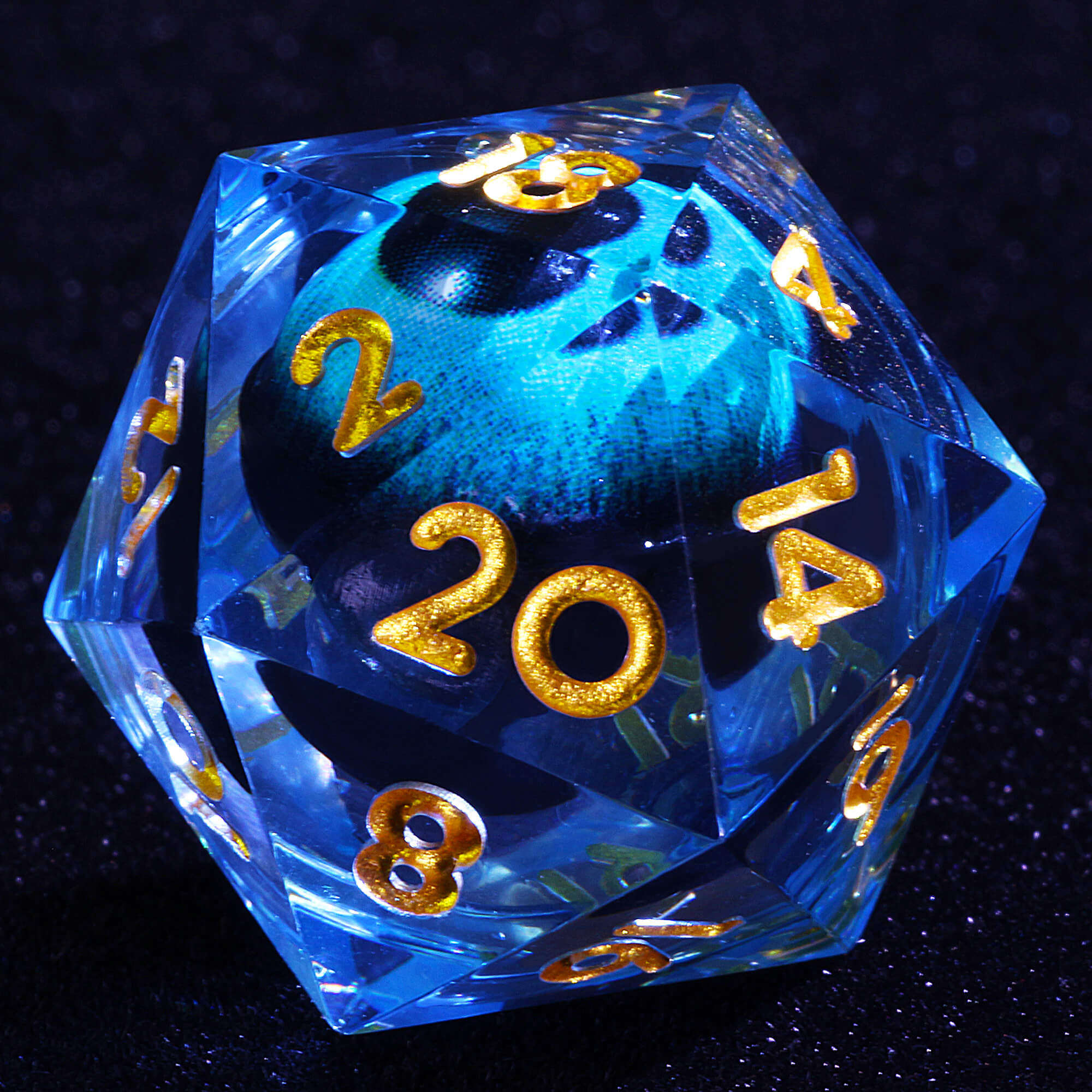Ever found yourself at a critical moment in a D&D game, with the outcome hanging in the balance as you roll the iconic 20-sided die? The D20 isn't just a quirky shape; it's the heart of Dungeons & Dragons (D&D), representing the thrill of chance and the boundless possibilities of adventure. But why does D&D rely so heavily on 20-sided dice? Let's dive into the math, logic, and history behind the D20's pivotal role in D&D.
The Platonic Connection: D20 as a Platonic Solid
The D20 isn't just any die; it's one of the five Platonic solids—a set of geometric shapes with identical faces and symmetrical properties. Specifically, the D20 is an icosahedron made up of 20 equilateral triangles.

This shape is the Platonic solid with the most faces, making it the most complex of these ancient geometric forms. Its symmetry ensures that each face has an equal probability of landing face up, which is perfect for fair gameplay in D&D.
In D&D, the D20's even distribution of outcomes allows for a balanced game where every result feels exciting and achievable. This balance captures the spirit of adventure and risk that defines the game.
The Evolution of Dice in D&D: From D6s to D20s
Dungeons & Dragons didn't always revolve around the D20. When the game first emerged in the 1970s, it primarily used six-sided dice (D6s), familiar from board games like Monopoly. Initially, D&D utilized these dice for various outcomes, such as hits and damage.

However, as the game evolved, introducing polyhedral dice, including the D20, provided a more excellent range of outcomes and added complexity to the game. The transition was influenced by wargaming traditions, where polyhedral dice were already used. This change allowed for a richer gameplay experience, introducing more nuanced mechanics.
The Influence of Wargaming
The D20's prominence grew with its adoption in games like "Chainmail," a wargame that preceded D&D. These early uses demonstrated the benefits of polyhedral dice, leading to their inclusion in D&D's core mechanics.

Initially, D20s were used alongside percentage-based rolls, providing a finer level of detail. Over time, the D20 became central to D&D's gameplay, handling attack rolls, saving throws, and skill checks.
The D20 Takes Center Stage: Becoming the Core of D&D
By the time Advanced Dungeons & Dragons (AD&D) was released, the D20 had become crucial to the game. Its ability to offer a wide range of outcomes made it ideal for the complex mechanics of the game.

Rolling a natural 20 could result in a critical hit, while rolling a one often meant a critical failure. This range of possibilities added drama and excitement to every roll, making the D20 an integral part of the D&D experience.
The Mathematics Behind the Magic: Probability and Game Balance
The D20 isn't just a quirky shape; it's a finely tuned instrument of chance, and its mathematical properties are integral to how D&D plays out. Each face of the D20 represents a 5% chance of landing on any specific number, which means that every roll has a clear, quantifiable impact on the game. Let's explain how these probabilities influence your gameplay with a few examples.
-
Example 1: Success Rates in Combat
Imagine your character is attempting a critical attack against a formidable dragon. The Dungeon Master sets a high Difficulty Class (DC) of 17 for this attack. With a D20, rolling a 17 or higher means you succeed. So, the probability of hitting that mark is 20% (rolling a 17, 18, 19, or 20). This can add dramatic tension to each roll, making the moment of truth thrilling and uncertain.
-
Example 2: Skill Checks and Saving Throws
Consider a situation where your rogue is trying to disarm a complex trap. The DC is set at 15. Rolling a 15 or higher gives you a 30% chance of success. This level of challenge is balanced enough to allow skill and strategy to play a significant role. It's not too easy to make success trivial, but not so hard that it feels impossible without specific character skills or advantages.
-
Example 3: Critical Hits and Failures
The D20's role in determining critical hits and failures adds another layer of excitement. Rolling a natural 20 on an attack roll often results in a critical hit, which could mean double damage. Conversely, rolling a natural one can result in a critical failure, potentially leading to disastrous consequences. The 5% chance of rolling a 20 makes it a rare but potentially game-changing event. In comparison, the same 5% chance of rolling a 1 keeps players on their toes, knowing that failure is always possible.
-
Example 4: Probability and Tactical Choices
Imagine your party is negotiating with a dragon and needs to persuade it with a Charisma check. The DC for convincing the dragon is 12. Rolling a 12 or higher means a successful persuasion. With a 45% chance of success (rolling a 12, 13, 14, 15, 16, 17, 18, 19, or 20), players have a reasonably high chance of success. However, the stakes are still high enough to require thoughtful role-playing and strategy.
-
Example 5: Building Tension with Chance
For a climactic battle scene, the Dungeon Master might set a DC of 20 for a critical action. With only a 5% chance to succeed, players must weigh their options carefully and strategize how to improve their odds through spells, abilities, or team coordination. This low probability heightens the tension and excitement, making each roll momentous.
The D20's even distribution ensures that the outcomes are fair and unpredictable, perfectly balancing chance and strategy. Every roll affects the narrative, ensuring each session is suspenseful and exciting. So, next time you roll that 20-sided die, remember that it's not just a roll; it's a crucial part of your adventure, balancing the scales between fate and fortune.
The D20 in D&D’s Legacy
The D20 is more than just a die; it symbolizes D&D's spirit and legacy. It represents the blend of strategy and chance, the thrill of the unknown, and the endless possibilities of each adventure.
The D20's impact extends beyond D&D, influencing many other tabletop role-playing games. Its role in gaming culture is profound, and its continued popularity highlights its perfect fit within the D&D system.
Conclusion: The D20's significance goes beyond its 20 sides. It embodies the core principles of D&D—balance, fairness, and unpredictability. Whether you're rolling for a critical hit or making a saving throw, the D20 drives the story forward with every roll.
Next time you pick up your D20, remember that you're not just rolling a die; you're rolling for your destiny. Share your D20 stories and let us know how this iconic die has shaped your adventures in D&D.































